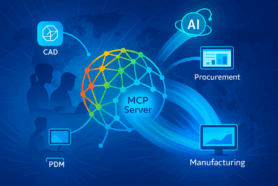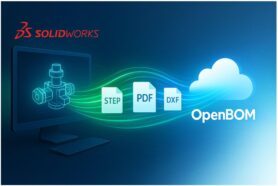
All businesses, no matter the size, need to plan to execute their supply chain strategy. For most small businesses they need to decide whether they will invest in their production lines or leverage a contract manufacturer (CM).
While sometimes investing in your production lines makes sense, for most cases outsourcing production to a CM is more logical. This arrangement allows small businesses to leverage the expertise, resources, and scale of specialized manufacturers without bearing the burden of establishing and managing their own production facilities.
The importance of selecting the right CM cannot be overstated. For small businesses, this decision can significantly impact their product quality, cost-effectiveness, time-to-market, and ultimately, their competitiveness in the marketplace. A well-chosen CM serves not just as a production partner, but as an extension of the small business itself, sharing its vision, values, and commitment to excellence.
In this blog, we’ll outline the top 10 tips that small businesses should consider when working with CMs.
Tip 1: Do Your Research
Before diving into a partnership with a CM conducting thorough research is paramount. This phase sets the foundation for a successful collaboration and helps small businesses make informed decisions that align with their goals and requirements.
The importance of research cannot be overstated. It serves as a crucial step in identifying and selecting the right CM for your business. Here are some key factors to consider during the research phase:
- Capabilities
- Reputation
- Experience
- Quality Assurance
- Financial Stability
- Location
- Communication and Transparency
Tip 2: Define Your Requirements
Before engaging with a CM, it’s crucial for small businesses to clearly define their product specifications and requirements. This step lays the groundwork for a productive partnership and ensures that both parties are aligned on expectations.
You should make sure you clearly define the following:
- Product Specifications
- Quality Standards
- Quantity and Forecasts
- Lead Times
- Budget and Pricing
- Intellectual Property Right
Tip 3: Encourage Open Communication
If you are going to define your product requirements then you are essentially handing over the IP and business plan to your CM. Sharing your product data can be difficult to do with a company you are not familiar with or you have just met. Everyone knows the horror stories of CMs stealing IP but this is a risk and something that hopefully you can watch out for in a CM when you are doing your research.
If you wish to enable collaboration with your CM then you’ll need to encourage open communication. Whether your main communication tool is email, WhatsApp, phone calls, WeChat or anything else, you should utilize tools to enable open communication. A growing opportunity to establish an AI-generated presentation can be a useful tool to visually communicate expectations, workflows, and important product data to your CM, helping foster a clearer understanding and reducing the likelihood of miscommunication.
Open communication will help with the following:
- Align Expectations
- Feedback and Iteration
- Problem-Solving
- Continuous Improvement
Tip 4: Review Contract Terms Carefully
When engaging with a CM, reviewing and understanding all terms and conditions in the contract is paramount for small businesses. The contract serves as a legal agreement that outlines the rights, responsibilities, and obligations of both parties involved in the manufacturing process. Careful review of the contract terms ensures clarity, transparency, and protection of interests for all parties involved.
In the contract, pay attention to the following:
- Clarity and Understanding
- Risk Mitigation
- Compliance and Accountability
- Pricing Terms
- Currency fluctuations
- Lead Times
- Quality Standards
- Intellectual Property Rights
- Termination Clauses
Tip 5: Quality Assurance and Control
Implementing robust quality assurance and control measures is essential for small businesses working with CMs. Quality assurance ensures that products meet specified standards and requirements, while quality control involves monitoring and testing to identify and rectify any deviations from these standards. By prioritizing quality throughout the manufacturing process, businesses can uphold customer satisfaction, protect their brand reputation, and achieve long-term success in the marketplace.
Your supplier should be able to show and explain the following:
- Supplier Qualification
- Process Optimization
- Quality Control Inspections
- Employee Training and Empowerment
- Customer Feedback and Monitoring
Tip 6: Maintain Flexibility
Flexibility is a critical aspect of successful manufacturing operations, especially for small businesses working with CMs. The ability of the CM to be able to adapt to changing demands, design requirements, and unforeseen challenges is important.
Most likely a small business is nimble and can make decisions quickly. A CM that is not able to support this agile approach will not be a strong partner for the small business.
Here is why flexibility is important for small businesses working with CMs:
- Meeting Changing Demand
- Adapting to Design Modifications
- Navigating Supply Chain Disruptions
- Seizing Opportunities
- Enhanced Responsiveness
Tip 7: Build a Strong Relationship
Establishing a strong and collaborative relationship with the CM is crucial for small businesses seeking success in the manufacturing industry. A CM can provide you with a lot of services and they can become a part of your team. However, if you have a bad relationship with them then you will never be able to leverage those resources and tools.
Here is why you need to build a strong relationship with your CM:
- Trust and Reliability
- Transparency and Communication
- Collaboration and Innovation
- Long-Term Partnership
Tip 8: Monitor Performance and Provide Feedback
Monitoring the performance of the CM is essential for small businesses to ensure that production processes remain efficient, product quality meets expectations, and the partnership continues to be mutually beneficial. Additionally, providing constructive feedback enables both parties to identify areas for improvement, foster continuous learning, and enhance the overall quality of the partnership.
Here are some things that are important to track and offer feedback on:
- Rejection Rate
- Quality Support
- Timeliness and Efficiency
- Cost Management
- Risk Management
- Development Timelines
- Communication & Response Effectiveness
Tip 9: Create Favorable Payment Terms
Negotiating flexible payment terms with the CMs is a strategic approach that can benefit both parties involved in the manufacturing partnership. Flexibility in payment terms allows small businesses to manage cash flow effectively, mitigate financial risks, and maintain a positive working relationship with the manufacturer.
Here are the top reasons why managing your payment terms with your CM is important:
- Cash Flow Management
- Risk Mitigation
- Enhanced Collaboration
Tip 10: Set Realistic Expectations
Setting realistic expectations regarding sales forecasts, project timelines, deliverables, and outcomes is crucial for small businesses working with CMs. Sometimes small business exaggerate their forecasts and size to make it seem like they are bigger so the CM is willing to work with them. However, once orders come in and you are unable to place those large orders, the CM will take action.
If you do not set realistic expectations with your CM then you risk the following:
- Pricing Problems
- Increased Inventory
- Loss of Trust
- Lost Time
Conclusion
Navigating the complexities of working with a CM can be a challenging yet rewarding endeavor for small businesses.
From conducting thorough research and defining clear requirements to maintaining flexibility and providing constructive feedback, small businesses have the tools and strategies needed to establish successful manufacturing partnerships. By prioritizing communication, collaboration, and continuous improvement, businesses can navigate challenges, mitigate risks, and achieve their manufacturing objectives effectively.
OpenBOM is a cloud-based PDM & PLM platform to manage your engineering and manufacturing data. Companies from startups to Fortune 500s use OpenBOM to create a centralized database to bring in, store, and manage their manufacturing data. With this infrastructure, users also use OpenBOM to streamline both their change management and PO processes.
If you need to improve the way you manage your data and processes, share data instantly, or collaborate with contractors and suppliers. Contact us today for a free consultation.
By: Jared Haw
Join our newsletter to receive a weekly portion of news, articles, and tips about OpenBOM and our community.











